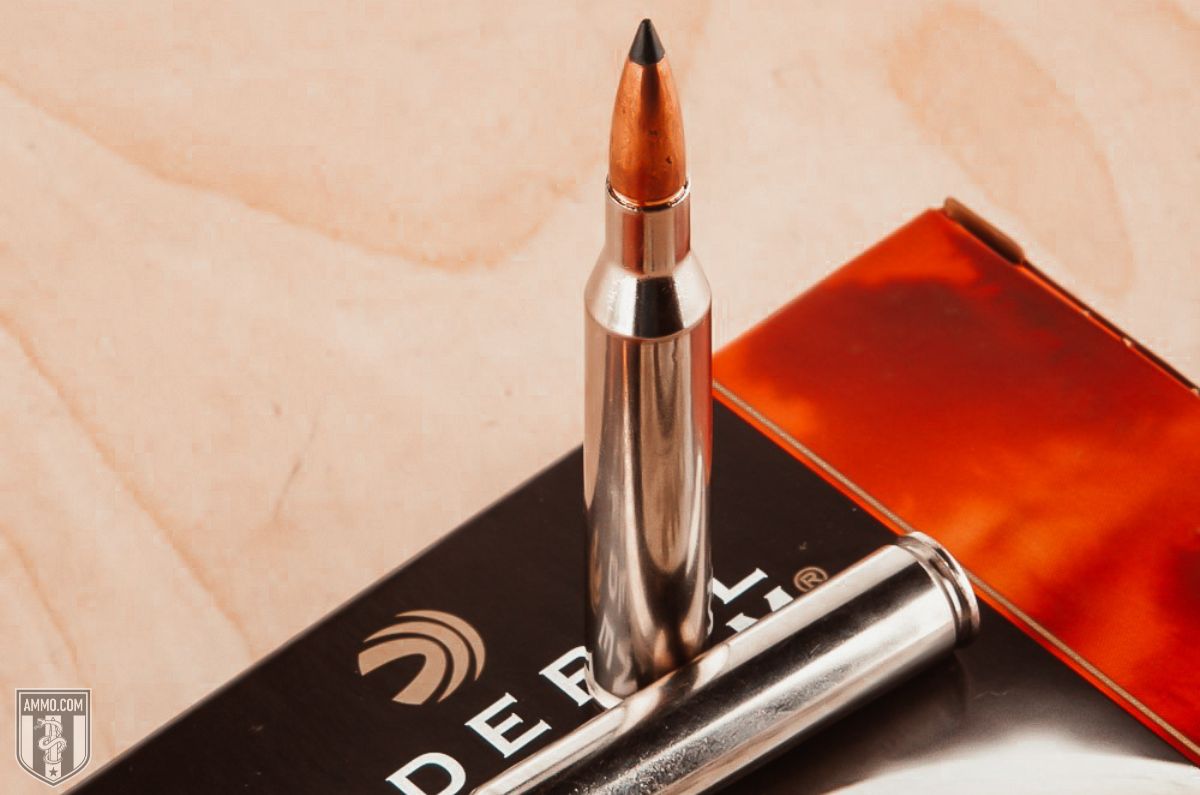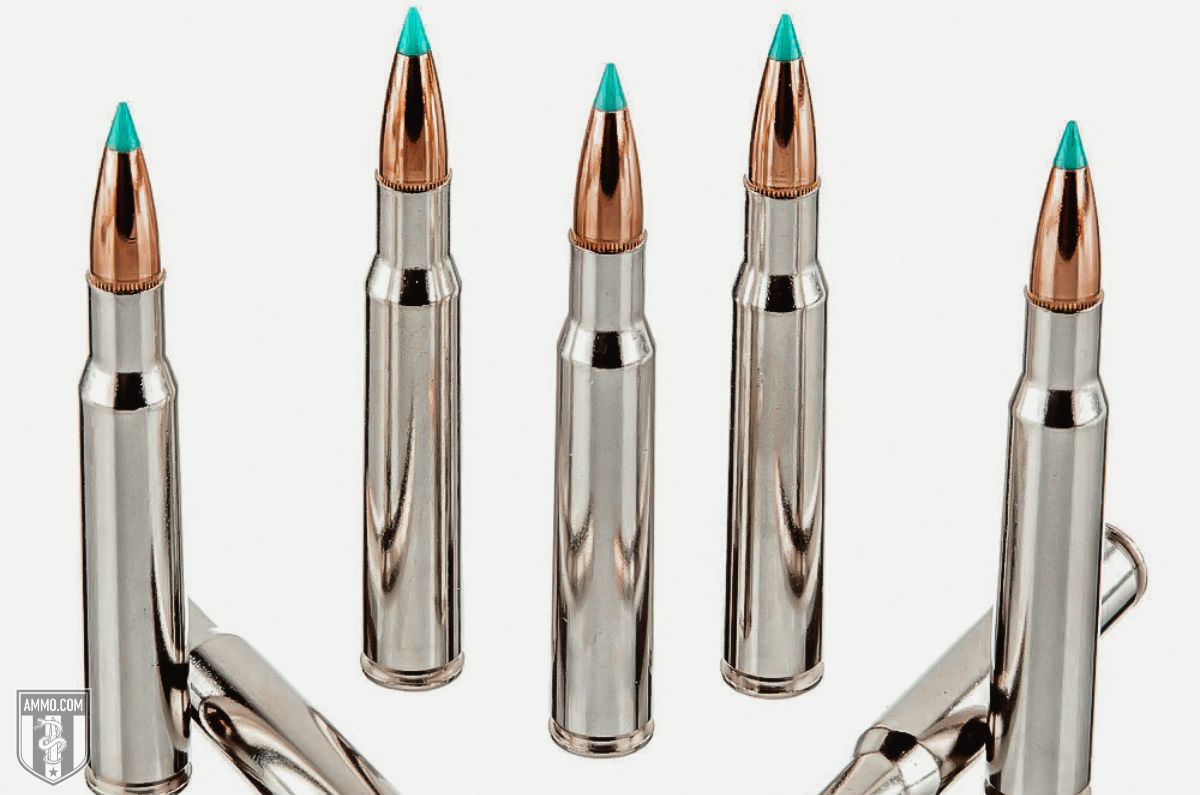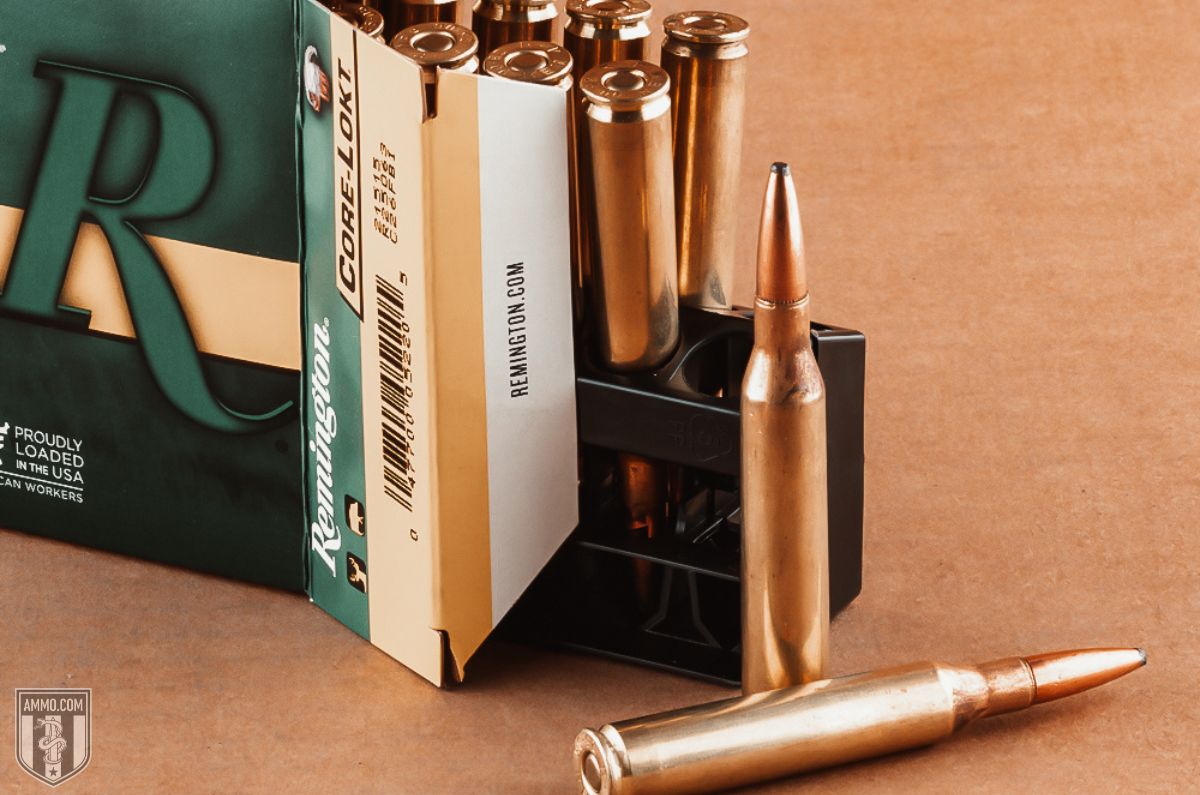25-06 vs 30-06: Is the 30-06 Overrated?

The 25-06 is an old wildcat cartridge turned mainstream, while the 30-06 has been a staple for many years. Neither round is as popular as they once were, but they both still have an important role to play for many shooting enthusiasts.
When we compare the 25-06 vs 30-06, we'll determine if 30-06 Springfield shooters continuing to switch to the 25-06 Remington is justified.
By the end of the article, you'll know which caliber is best for you based on recoil, accuracy, stopping power, cost, and many more crucial factors.
Who knows, you might decide the 30-06 is overrated.
25-06 vs 30-06
The 30-06 has been a go-to rifle for deer hunters for many generations. However, its reign has slowly been coming to an end with the continued emergence of quarter-bores.
Below you'll find the cartridges compared; then, we will compare several characteristics of each round to determine a winner.
I'm approaching this article from the average shooting enthusiast's point of view, so you'll see that some sections might not be as relevant for you as others based on your hunting and shooting preferences, so you might come to a different conclusion than I do, and that's okay.
Let's get started!
Cartridge Specs
The cartridges are incredibly similar because the 25-06 case is the 30-06 cartridge is necked down to accept .257 in diameter bullets. You can see from the chart that nearly everything else is identical or eerily similar.
The 25-06 bullets are .257" in diameter, while 30-06 bullets are .308" in diameter. This is why the neck diameter of the 25-06 cartridge is .290" and the 30-06 neck diameter is .340".
There is only a hair difference between the base diameter of each cartridge. The 25-06 Remington is .470", and the 30-06 Springfield is .471".

The case length is identical at 2.494".
The larger bullet of the 30 06 means the overall length is slightly more at 3.34", but the 25 06 isn't much shorter at 3.25".
The 30 06 Springfield also has a higher case capacity of 68-grains compared to the 65.8 gr H2O of the 25 06 Remington.
The maximum pressure (SAAMI) for the 25-06 is 63,000 psi, and the 30-06 max pressure is 60,200 psi.
As you can see, the 25 06 and 30 06 case dimensions are very similar, but how does that translate from numbers on a screen to the real world?
Recoil: 25 06 vs 30 06
For most shooters, recoil matters because we don't want to bruise our shoulders while sighting the rifle for hunting season.
Though recoil doesn't matter as much for hunters as it does for target shooters, it still should be a consideration because sometimes a quick follow-up shot is needed while hunting, and less recoil makes this much more accessible.
Light recoil is also great for new or inexperienced shooters. They tend to flinch less with a round that has little recoil because they're less scared of the gun hurting them.
So which round has the least amount of felt recoil? Well, that depends on a few factors, the primary ones being gun and bullet weight.
The heavier the gun, the less felt recoil it will have, and the heavier the bullet, the more recoil it has.
So with that in mind, knowing the 30-06 shoots larger projectiles, it should have more recoil, and it does.
How much more, though?
You can expect the 30-06 to punch your shoulder with 23 to 25 ft-lbs of force while the 25-06 recoils with 19-ft-lbs.
This doesn't sound like much difference, but it is noticeable. However, the 30-06 isn't known as a heavy recoil round compared to the 300 Win Mag.
The 25-06 Remington wins this section.
Trajectory
The trajectory is a bullet's flight path to its target measured in inches of bullet drop. As a bullet travels downrange, it is constantly being pulled down thanks to gravity. A flat trajectory is preferred for long-range shooting.
Gravity affects lighter bullets traveling at a higher velocity (FPS) less because they reach the target quicker than heavier bullets moving slower.
The 25 06 shoots lighter bullets at higher velocities, so in theory, it should have a better trajectory.
How much better depends on the weight of the bullet.
The 150-grain Nosler Partition, 30-06, has a bullet drop of -42" at 500 yards, while the 25 06 115gr Winchester Ballistic Silver Tip drops -44" at 500 yards.
However, the 25-06 85gr Winchester Ballistic Silver Tip only drops -38" at 500yds.
If it were possible to compare the same bullet weights, the 30-06 would have the advantage.
However, out to 200 yds, the 25-06 is flat shooting, which is within the range it was intended to be used.
If you're shooting within 300 yards, the advantage goes to the 25-06, but if you plan to shoot out to 500yds, the advantage shifts to the 30-06.
This section is a draw.
Accuracy: 2506 vs 3006
Accuracy is heavily dependent on the abilities of the shooter and the rifle. Certain rifles often prefer specific ammo. However, for the article's sake, we will assume all variables are as similar as possible.
This means recoil and trajectory will come into play more. The average shooter will find it easier to be more accurate with the 2506 Remington because of its reduced recoil. That's not to say the 3006 Springfield isn't accurate because it is when it's in the hands of an experienced shooter.
The 25-06 is the winner of this section, but only slightly.
To learn more, check out our recommendations for the best 30-06 ammo for accuracy.
Ballistic Coefficient
The ballistic Coefficient (BC) is a numerical representation of a bullet's aerodynamics; a high BC is preferred because it means the bullet will better resist the wind.
Calculating the BC is rather complicated and irrelevant for this article. However, you should know heavier bullets typically have a higher ballistic coefficient.
The 25-06 Remington 117 Grain Federal Power-Shok rounds have a ballistic coefficient of .361.
Compared to the BC of .329 of the 25-06 Federal Premium 85 grain Varmint & Predator Nosler Ballistic Tip round.
The 120-grain Federal Fusion 26-06 Remington round has a BC of .468, slightly better than the Hornady 110 Grain ELD-X Precision Hunter Rounds with a .465 ballistic coefficient.
The Remington 30-06 Springfield 165 Grain AccuTip Boat Tail has a BC of .447.
The Federal Fusion Rifle 30-06 150-grain bullet has a ballistic coefficient of .410.
The ballistic coefficient of a 180-grain 30-06 Nosler Accubond rounds is .507.
The 30-06 has the ability to have a heavier bullet weight which means it will also have the ability to have a better ballistic coefficient.
The 30-06 wins this section.
Stopping Power: 25.06 vs 30.06
Sometimes it's argued that stopping power is irrelevant. While this is true for target shooters, I believe it's essential for hunting purposes.
Excellent shot placement with a 223 Remington is just as effective as a perfect shot with a 270 Winchester; however, a poor shot with a 223 is not nearly as effective as a poor shot with a 270.
Perfect shots while hunting are rarer than we'd like to admit, which is why stopping power is crucial. It ensures we can still achieve an ethical kill without having to make the perfect shot every time.
Stopping power is measured by how big of a hole the bullet leaves and how deep it penetrates. Sectional density measures how well a bullet should penetrate a target.
It's calculated by comparing the bullet weight and the bullet diameter. The higher the SD, the deeper the bullet will penetrate the target.
Most 25-06 Rem bullets have an SD of around .22 due to their smaller diameter bullets and lighter weights.
The heavier bullets of the 30-06 average around 0.26 SD, so not that much better, but you'll notice the difference when hunting larger game animals.
The 30-06 wins this section thanks to its bigger, heavier bullets.
Hunting
If there's one reason why these calibers are still popular, it's because hunters often use them. Many would consider either caliber their favorite deer hunting cartridge.
The 25-06 can take medium-sized game like coyotes, whitetail deer, mule deer, and antelope. The 30-06 can ethically harvest all these animals and other big game like elk.
However, both calibers are most effective within 300 yards. If you need to make longer shots, I recommend the 6.5 Creedmoor.
The 30-06 has the advantage in this category because it can hunt a wider variety of species.
Home Defense: 30-06 vs 25-06
I never recommend using a rifle cartridge for home defense because overpenetration puts your family and neighbors at increased risk. However, if all I had were a 25-06 or 30-06 to defend myself and my family, I would use it.
I believe there are much better options for personal defense, such as a shotgun or pistol.
These two calibers are not great home defense rounds because they're typically found in a bolt-action rifle, which is good for hunting but not very good for protecting against home invaders.
Instead, I would use a pump-action 12 ga or 20 ga shotgun, depending on your sensitivity to recoil.
My next option would be a semi-automatic pistol chambered in 45 ACP, 40 S&W, or 9mm.
The 25-06 and 30-06 are better suited for medium to big game hunting instead of home defense, which is why this section is a tie.
Ammo Cost & Availability
Many first-time gun buyers forget to consider the price and availability of ammo. If you can't afford or find any ammo, your firearm is just a paperweight.
While both rounds have decent availability, the 30-06 is slightly less expensive.
A cheap round of 25 06 Remington will cost you $1.62 per trigger pull, but the average price is closer to $2.00 per round.
If you buy 30-06 ammo in bulk, you can find it for as low as $1.31 per round. However, $1.80 is the average price per trigger pull.
While we're talking about cost, don't forget to check out our Remington .30-06 ammo page.
Major ammunition manufacturers, such as Barnes, Hornady, Nosler, Remington, and Federal, make rounds for both calibers.
The winner of this section is the 30 06 Springfield.
Rifle Cost & Availability: 30 06 vs 25 06
The gun cost is usually a significant determining factor. Both calibers come in a wide range of price points.
A 25-06 Savage Arms Axis XP will cost around $400, while a Browning X-Bolt Stalker chambered in 25 06 Rem can cost more than $1,200.
A Savage Arms Axis XP chambered 30-06 will cost slightly over $400. The Ruger American Rifle will cost a little over $600, and a Christensen Arms Ridgeline FFT will cost a staggering $2,400.
The less expensive hunting rifle is the 25-06 Rem, but it's not by much.
The 25 06 is the winner of this category.
Reloading
One way to save money on ammo is to reload instead of purchasing factory loads.
Handloading is less expensive in the long run and gives you more control over the controllable variables so you can be more consistent when shooting.
It costs more upfront and is time-consuming to begin reloading. However, if you shoot often, it's worth the investment.
Both calibers can be hand loaded because the supplies and materials are readily available for each round.
This section is a tie.
30 06 Ballistics
Note: This information comes from the manufacturer and is for informational purposes only. The actual ballistics obtained with your firearm can vary considerably from the advertised ballistics. Also, ballistics can vary from lot to lot with the same brand and type load.
| 30-06 Bullet WEIGHT | Muzzle VELOCITY (fps) | Muzzle ENERGY (ft. lbs.) | TRAJECTORY (in.) | |||||||||||
|---|---|---|---|---|---|---|---|---|---|---|---|---|---|---|
| Muzzle | 100 yds. | 200 yds. | 300 yds. | 400 yds. | Muzzle | 100 yds. | 200 yds. | 300 yds. | 400 yds. | 100 yds. | 200 yds. | 300 yds. | 400 yds. | |
| 55 Grain | 4080 | 3485 | 2965 | 2502 | 2083 | 2033 | 1483 | 1074 | 764 | 530 | 2 | 1.9 | -2.1 | -11.7 |
| 125 Grain | 2660 | 2335 | 2034 | 1757 | n/a | 1964 | 1513 | 1148 | 856 | n/a | 0 | -5.2 | -18.9 | 0 |
| 125 Grain | 2700 | 2412 | 2143 | 1891 | 1660 | 2023 | 1615 | 1274 | 993 | 765 | 2.3 | 0 | -9.9 | -29.5 |
| 125 Grain | 3140 | 2780 | 2447 | 2138 | 1853 | 2736 | 2145 | 1662 | 1279 | 953 | 2 | 1 | -6.2 | -21 |
| 150 Grain | 2910 | 2617 | 2342 | 2083 | 1853 | 2820 | 2281 | 1827 | 1445 | 1135 | 2.5 | 0.8 | -7.2 | -23.4 |
| 150 Grain | 3080 | 2848 | 2617 | 2417 | 2216 | 3159 | 2700 | 2298 | 1945 | 1636 | 1.4 | 0 | -6.4 | -18.9 |
| 165 Grain | 2800 | 2534 | 2283 | 2047 | 1825 | 2872 | 2352 | 1909 | 1534 | 1220 | 2.5 | 0.4 | -8.4 | -25.5 |
| 168 Grain | 2710 | 2522 | 2346 | 2169 | 2003 | 2739 | 2372 | 2045 | 1754 | 1497 | 2.5 | 0.4 | -8 | -23.5 |
| 168 Grain M1 Garand | 2710 | 2523 | 2343 | 2171 | 2006 | 2739 | 2374 | 2048 | 1758 | 1501 | 2.3 | 0 | -8.6 | -24.6 |
| 170 Grain | 2000 | 1740 | 1510 | n/a | n/a | 1510 | 1145 | 860 | n/a | n/a | 0 | 0 | 0 | 0 |
| 178 Grain | 2720 | 2511 | 2311 | 2121 | 1939 | 2924 | 2491 | 2111 | 1777 | 1486 | 2.5 | 0.4 | -8.2 | -24.6 |
| 180 Grain | 2700 | 2469 | 2250 | 2042 | 1846 | 2913 | 2436 | 2023 | 1666 | 1362 | -2.5 | 0 | -9.3 | -27 |
| 180 Grain Superformance | 2820 | 2630 | 2447 | 2272 | 2104 | 3178 | 2764 | 2393 | 2063 | 1769 | 1.8 | 0 | -7.6 | -21.9 |
| 180 Grain High Energy | 2880 | 2690 | 2500 | 2320 | 2150 | 3315 | 2880 | 2495 | 2150 | 1845 | 1.7 | 0 | -7.2 | -21 |
| 220 Grain | 2410 | 2130 | 1870 | 1632 | 1422 | 2837 | 2216 | 1708 | 1301 | 988 | 2.5 | -1.7 | -18 | 0 |
25-06 History
Gunsmith Adolph Niedner is credited with necking down the 30-06 cartridge to fit a .25 caliber bullet in the 1920s.
It wasn't until 1969 that Remington made the cartridge for the masses and took it from a wildcat round to a mainstream caliber.
The 25-06 is considered a quarter-bore rifle alongside the .250-3000 Savage and the 257 Roberts because they all shoot .25 caliber bullets.
It's been used to take down big game; however, it's best suited for deer and other similar-sized game animals.
Though it's not as popular as it once was, many hunters hold this caliber in high esteem due to nostalgia.
30-06 History
Field and Stream called the 30-06 Springfield "the greatest cartridge of all time," and Gun Digest said it's "the only round you need for just about anything."
It was adopted by the US Army in 1906 and was carried by soldiers into the 1980s; talk about a run.
The 30-06 was the primary round of American servicemen during World War I & II, the Korean War, and the Vietnam War.
It's been chambered in many guns, including-
- Browning automatic rifle
- Famage Mauser
- M1 Garand
- M1903 Springfield
- M1917
- M1918 Enfield
- M1919
- M1941 Johnson
The 30-06 was not only popular in military weapons but also a success on the civilian market with hunters.
It can take a wide range of species and has been the round to stir up nightmares for all deer during hunting season.
Though its popularity has peaked and begun to wane, it still makes an excellent hunting rifle.
Parting Shots
When comparing the 25-06 vs 30-06, many shooters happily sacrifice stopping power for a recoil reduction.
But does this make it the right choice for you?
The 25-06 won 3/10 categories.
The 30-06 won 4/10 categories.
The remaining sections were a draw, meaning 30-06 is the winner!
So no, I do not believe the 30-06 is overrated; however, the 25-06 gives it a run for its money.
Ammo Comparisons
- .308 vs 5.56
- 6.5 Creedmoor vs .308
- .300 Blackout vs .308
- .300 Win Mag vs .308
- .243 vs .308
- .308 vs .30-06
- 7mm-08 vs .308
- .270 vs .308
- 7.62x39 vs .308
- .223 vs .308
- .338 Lapua vs .308
- .380 ACP vs 9mm
- .223 vs 5.56
- .300 Blackout vs 5.56
- 9mm vs 45 ACP
- 9mm vs 40 S&W
- .357 SIG vs 9mm
- 10mm vs 9mm
- 9mm vs 9mm Luger
- .243 vs .270
- .300 Win Mag vs .30-06
- .270 vs .30-06
- .40 vs .45
- 38 Special vs 357
- 9mm vs 40 vs 45
- 5.56 vs 7.62x39
- 338 Lapua vs .30-06
- .30-30 vs .30-06
- 300 PRC vs 338 Lapua
- .30-06 vs 7mm
- 300 Win Mag vs 338 Lapua
- 300 PRC vs 300 Win Mag
- 300 WSM vs 300 Win Mag
- 338 Win Mag vs 338 Lapua
- 12 Gauge vs 20 Gauge
- 10mm vs 357 Mag
- .30-30 vs 7.62x39
- 224 Valkyrie vs 22-250
- 17 HMR vs 22 Mag
- 7.62x39 vs .300 Blackout
- 45 ACP vs 45 Auto
- 45-70 vs 30-30
- 300 Blackout vs 223
- 357 Magnum vs 9mm
- 350 Legend vs 300 Blackout
- 224 Valkyrie vs 223
- 45 ACP vs 38 Super
- 6.5 Grendel vs .308
- 17 HMR vs 22 LR
- 10 Gauge vs 12 Gauge
- 22-250 vs 223
- 45 Colt vs 45 ACP
- 350 Legend vs 30-30
- 5.7x28 vs 223
- 5.7 vs 9mm
- 5.56 vs 5.7
- 22 vs 9mm
- Buckshot vs Birdshot
- 450 Bushmaster vs 308
- 450 Bushmaster vs 223
- Buckshot vs Slug
- 6.5 Grendel vs 5.56 vs 223
- 6mm ARC vs 6.5 Grendel
- 44 vs 45
- 458 SOCOM vs 5.56
- 357 vs 44
- 32 ACP vs 380
- 300 Win Mag vs 338 Win Mag vs 338 Lapua Mag
- 450 Bushmaster vs 458 SOCOM vs 50 Beowulf
- 6mm Creedmoor vs 6.5 Creedmoor
- TMJ vs FMJ
- 44 Special Vs 44 Magnum
- 45 90 vs 45 70
- 6.8 Western vs 6.8 SPC
- 50 Beowulf vs 50 BMG
- 26 Nosler vs 6.5 PRC
- 28 Gauge vs 410
- 6.8 SPC vs 5.56
- 6.8 SPC vs 6.5 Grendel
- 6.8 Western vs 7mm Rem Mag vs .28 Nosler
- 6.8 Western vs 6.5 Creedmoor
- 22 Hornet vs 223
- 6.8 Western vs 6.5 PRC
- .410 vs 12 Gauge
- .410 vs 20 Gauge
- 22 LR vs 22 Mag
- 6mm ARC vs 243
- 7mm-08 vs 270
- 243 vs 6.5 Creedmoor
- Nickel vs Brass Casing
- 204 Ruger vs 223
- 50 Beowulf vs 5.56
- 260 Remington vs 6.5 Creedmoor
- 6mm Remington vs 243
- 28 Nosler vs 300 PRC
- 50 Beowulf vs 50 AE
- 22 Nosler vs 22-250
- 450 Marlin vs 45-70
- 300 Win Mag vs 300 Norma
- 458 SOCOM vs 300 Blackout
- 38-55 vs 45-70
- 22 Hornet vs 22 LR
- 300 Norma vs 338 Lapua
- 338 Lapua vs 50 BMG
- 28 Nosler vs 300 Win Mag
- 28 Nosler vs 6.5 Creedmoor
- 204 vs 22-250
- 458 SOCOM vs 45 70
- 44 40 vs 45 70
- 6.8 SPC vs 6.5 Creedmoor
- 450 Bushmaster vs 30-06
- 7mm Rem Mag vs 300 Win Mag
- 30 Carbine vs 223
- 25-06 vs 30-06
- 26 Nosler vs 28 Nosler
- 16ga vs 12ga
- 30 06 vs 7.62 x54R
- 9mm Makarov vs 9mm Luger
- 350 Legend vs 223
- 30 Carbine vs 5.56
- 6.5x55 vs 6.5 Creedmoor
- 6.5 Creedmoor vs 270 vs 25-06
- M193 vs M855
- 450 Bushmaster vs 458 SOCOM
- 6.5 Grendel vs 6.5 Creedmoor
- 350 Legend vs 5.56
- .277 Fury vs 6.8 SPC
- 277 Fury vs 300 Win Mag
- 10mm vs .45 ACP
- 277 Fury vs 223
- 6.8 SPC vs 300 Blackout
- 6.5 PRC vs 6.5 Creedmoor
- 277 Fury vs 308
- 277 Fury vs 6.5 Creedmoor
- 350 Legend vs 450 Bushmaster
- 277 Fury Vs 5.56 NATO
- 10mm vs 40S&W
- 32 ACP vs 9mm
- 32 Special vs 9mm
- 8.6 Blackout vs 300 Blackout
- 30 Super Carry vs. 9mm
- 5.56 vs 9mm
- .50 Action Express vs 9mm
- 7.62x25 vs. 9mm
- 10mm vs 44 Magnum
- 300 Blackout vs 300 Win Mag
- 6.5 Grendel vs 300 Blackout
- 460 Rowland vs 10mm
- 300 RUM vs 300 PRC
- 300 Norma vs 300 PRC
- 45 GAP vs 45 ACP
- 7mm PRC vs 300 Win Mag
- 300 PRC vs 6.5 Creedmoor
- 300 PRC vs 308
- 357 SIG vs 357 Mag
- 7.62x39 vs 7.62x51
- 243 Win vs 223 Rem









